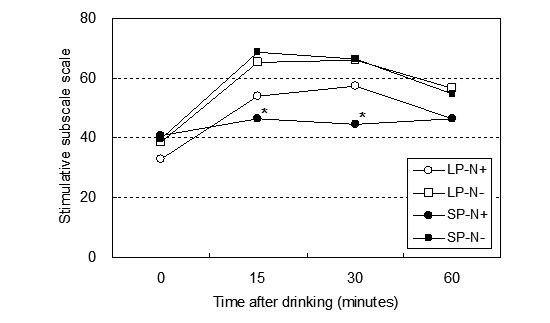1. Herz A. Endogenous opioid systems and alcohol addiction. Psychopharmacology (Berl). 1997; 129:99–111.
2. Goodwin DW, Davis DH, Robins LN. Drinking amid abundant illicit drugs: the Vietnam case. Arch Gen Psychiatry. 1975; 32:230–233.
3. Patel VA, Pohorecky LA. Acute and chronic ethanol treatment on beta-endorphin and catecholamine levels. Alcohol. 1989; 6:59–63.
4. Hubbell CL, Abelson ML, Burkhardt CA, Herlands SE, Reid LD. Constant infusions of morphine and intakes of sweetened ethanol solution among rats. Alcohol. 1988; 5:409–415.
5. Volpicelli JR, Watson NT, King AC, Sherman CE, O'Brien CP. Effect of naltrexone on alcohol "high" in alcoholics. Am J Psychiatry. 1995; 152:613–615.
6. O'Malley SS, Jaffe AJ, Chang G, Schottenfeld RS, Meyer RE, Rounsaville B. Naltrexone and coping skills therapy for alcohol dependence: a controlled study. Arch Gen Psychiatry. 1992; 49:881–887.
7. Volpicelli JR, Alterman AI, Hayashida M, O'Brien CP. Naltrexone in the treatment of alcohol dependence. Arch Gen Psychiatry. 1992; 49:876–880.
8. Laaksonen E, Koski-Jännes A, Salaspuro M, Ahtinen H, Alho H. A randomized, multicentre, open-label, comparative trial of disulfiram, naltrexone and acamprosate in the treatment of alcohol dependence. Alcohol Alcohol. 2008; 43:53–61.
9. Garbutt JC. Efficacy and tolerability of naltrexone in the management of alcohol dependence. Curr Pharm Des. 2010; 16:2091–2097.
10. Laaksonen E, Lahti J, Sinclair JD, Heinälä P, Alho H. Predictors for the efficacy of naltrexone treatment in alcohol dependence: sweet preference. Alcohol Alcohol. 2011; 46:308–311.
11. Garbutt JC, Osborne M, Gallop R, Barkenbus J, Grace K, Cody M, Flannery B, Kampov-Polevoy AB. Sweet liking phenotype, alcohol craving and response to naltrexone treatment in alcohol dependence. Alcohol Alcohol. 2009; 44:293–300.
12. Kim SG. Effect of capsaicin on alcohol intake in C57BL/6 mice. J Korean Neuropsychiatr Assoc. 2004; 43:564–569.
13. Lee JS, Kim SG, Kim HK, Baek SY, Kim CM. Acute effects of capsaicin on proopioimelanocortin mRNA levels in the arcuate nucleus of Sprague-Dawley rats. Psychiatry Investig. 2012; 9:187–190.
14. Jeong HJ, Kim SG, Kim JH, Park SH, Kang CJ. The impact of hot food preferences on naltrexone's effects on subjective acute responses to alcohol in social drinkers. J Korean Neuropsychiatr Assoc. 2007; 46:566–572.
15. Bach FW, Yaksh TL. Release of beta-endorphin immunoreactivity into ventriculo-cisternal perfusate by lumbar intrathecal capsaicin in the rat. Brain Res. 1995; 701:192–200.
16. Martin CS, Earleywine M, Musty RE, Perrine MW, Swift RM. Development and validation of the Biphasic Alcohol Effects Scale. Alcohol Clin Exp Res. 1993; 17:140–146.
17. O'Malley SS, Jaffe AJ, Chang G, Rode S, Schottenfeld R, Meyer RE, Rounsaville B. Six-month follow-up of naltrexone and psychotherapy for alcohol dependence. Arch Gen Psychiatry. 1996; 53:217–224.
18. Jaffe AJ, Rounsaville B, Chang G, Schottenfeld RS, Meyer RE, O'Malley SS. Naltrexone, relapse prevention, and supportive therapy with alcoholics: an analysis of patient treatment matching. J Consult Clin Psychol. 1996; 64:1044–1053.
19. Monterosso JR, Flannery BA, Pettinati HM, Oslin DW, Rukstalis M, O'Brien CP, Volpicelli JR. Predicting treatment response to naltrexone: the influence of craving and family history. Am J Addict. 2001; 10:258–268.
20. Volpicelli JR, Clay KL, Watson NT, O'Brien CP. Naltrexone in the treatment of alcoholism: predicting response to naltrexone. J Clin Psychiatry. 1995; 56:39–44.
21. Kim JH, Kim SG, Shin SH, Park JM, Kim MJ. Effect of naltrexone on acute alcohol response in social drinker. J Korean Neuropsychiatr Assoc. 2004; 43:689–696.
22. Cabanac M. Sensory pleasure. Q Rev Biol. 1979; 54:1–29.
23. Berridge KC. Food reward: brain substrates of wanting and liking. Neurosci Biobehav Rev. 1996; 20:1–25.
24. Kampov-Polevoy AB, Eick C, Boland G, Khalitov E, Crews FT. Sweet liking, novelty seeking, and gender predict alcoholic status. Alcohol Clin Exp Res. 2004; 28:1291–1298.
25. Kampov-Polevoy AB, Garbutt JC, Khalitov E. Family history of alcoholism and response to sweets. Alcohol Clin Exp Res. 2003; 27:1743–1749.
26. Driscoll KA, Perez M, Cukrowicz KC, Butler M, Joiner TE Jr. Associations of phenylthiocarbamide tasting to alcohol problems and family history of alcoholism differ by gender. Psychiatry Res. 2006; 143:21–27.
27. Hinrichs AL, Wang JC, Bufe B, Kwon JM, Budde J, Allen R, Bertelsen S, Evans W, Dick D, Rice J, et al. Functional variant in a bitter-taste receptor (hTAS2R16) influences risk of alcohol dependence. Am J Hum Genet. 2006; 78:103–111.





 PDF
PDF ePub
ePub Citation
Citation Print
Print






 XML Download
XML Download